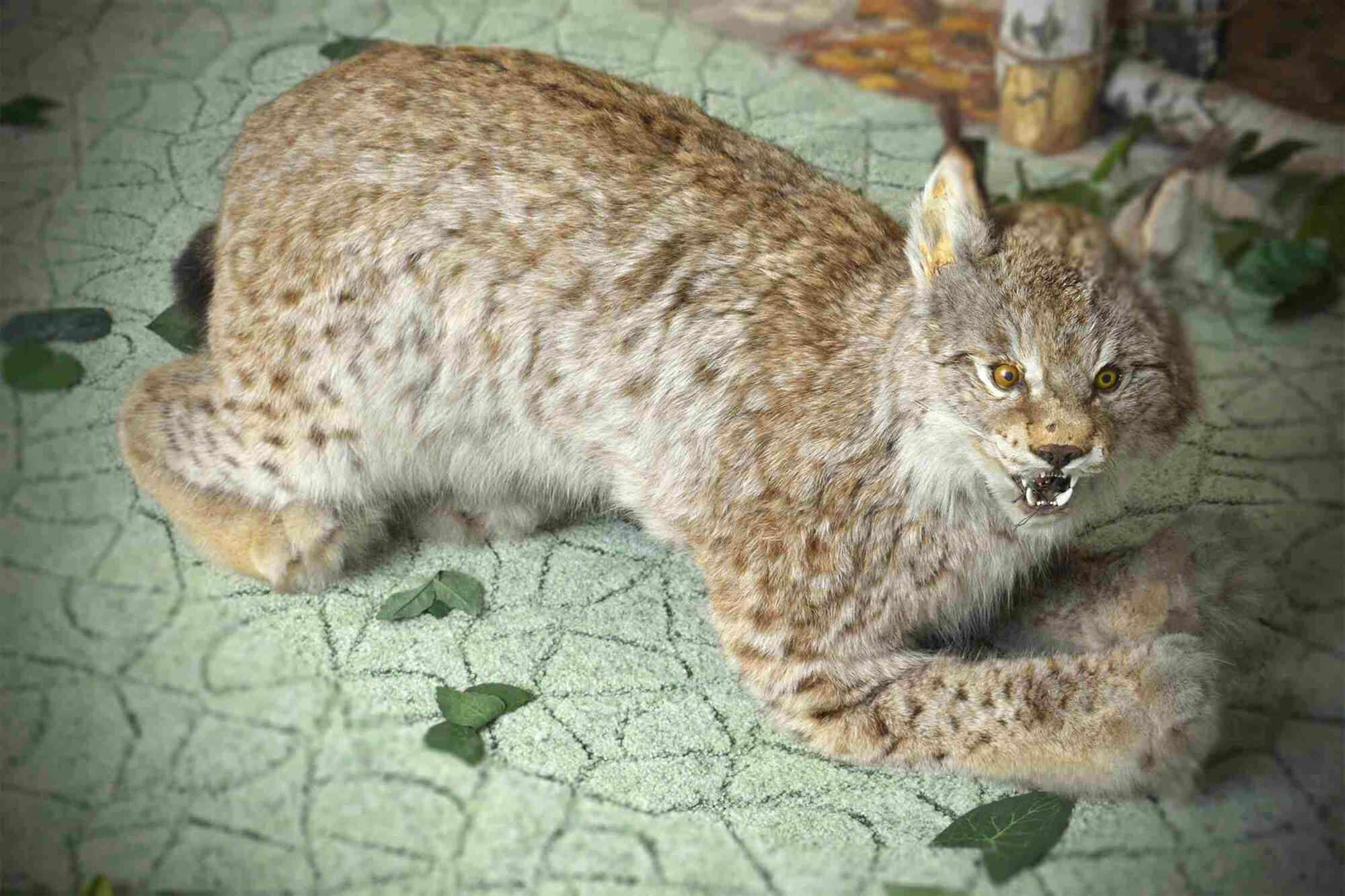The Eurasian lynx is a carnivorous mammal and a member of the cat family. Its genus is comprised of four species, which include several subspecies. The Eurasian lynx is common to Russia where its subspecies, the Northern lynx also lives. Although the animal’s natural habitat is extensive in the Russian Federation, stretching from its European part and the Ural region to East and West Siberia, Sakhalin and along the Amur river, its population is not high. In the Moscow region, it is therefore protected. In neighboring Belarus and Ukraine, the Eurasian lynx is in the Red List of Threatened Species. The weight of an adult male can reach 34 kilograms, which, on average, ranges from 20 to 28 kg. The length of its body plus the head is from 80 to 135 centimeters. A female is smaller and lighter than a male, measuring 75 to 100 cm in length and weighing 15 to 25 kg. The Eurasian lynx’s appearance differs from that of other members of the cat family. Its body is short and thick, with long legs and a short tail that looks chopped off. Its most distinguishing characteristics, which make this animal easily recognizable, are the tufts of hair on the tips of its triangular-shaped ears, and lengthy hair on its cheeks, which looks like prominent ‘sideburns’. Its fur, especially in winters, is very thick. The color of its coat ranges from sandy + straw-colored and light ash-blue to reddish-orange and dark-grey with chestnut brown undertones. Patterns on its fur also vary, at times, the body is covered by large bright spots or their barely visible equivalents or nothing at all. The appearance of the Eurasian lynx’s coat depends on where it lives. In northern regions, greyish-brown predators with silver undertones in their fur are common, while in warmer parts of the world, there are light orange animals with fuzzy-looking speckles.
The Eurasian lynx is a large energetic predator, which is usually active at dusk. It is a typical forest dwelling animal. Its main food source is mountain hares. The Eurasian lynx lies in wait for prey along forest paths, searches for its victims in their dens and burrows, and also pursues them. In regions where there are not many hares, the predator hunts small hoofed animals, such as Siberian musk and roe deer, chamois, elks and reindeer. It tends to attack wounded, weak or young animals born that year, which are alone. Its prey also include birds, i.e. partridges, hazel grouse and less often, black grouse and Eurasian capercaillie. Small rodents like pikas and voles can substitute its main food sources. When the animal traverses its territory, it follows a familiar route. The predator does not have a permanent shelter. If its hunt is successful, it can create a temporary den 100 to 150 meters from its fallen prey. The European lynx is not afraid to follow tracks made by skis and cross-country vehicles in order to move around more easily. Its breeding season is in February through March. Sixty to seventy days afterwards, a female lynx then gives birth to 2 to 5 offspring in a secluded den under the roots of a fallen tree. The youngsters stay with their mother until they are about 1 year of age. Unusual behavior has been observed among lynx kittens, referred to as early aggression within a litter. Offspring born during the same season fight with each other, and such battles sometimes result in deaths of weaker siblings. There are other mammals that exhibit such behavior, and the reason for it was found to be competition for food. Still, among lynxes, such a link has not been established. In the wild, Eurasian lynxes that have survived battles with their siblings and successfully avoided poachers and other dangers are capable of surviving until 20 years of age.
The Eurasian lynx is a large energetic predator, which is usually active at dusk. It is a typical forest dwelling animal. Its main food source is mountain hares. The Eurasian lynx lies in wait for prey along forest paths, searches for its victims in their dens and burrows, and also pursues them. In regions where there are not many hares, the predator hunts small hoofed animals, such as Siberian musk and roe deer, chamois, elks and reindeer. It tends to attack wounded, weak or young animals born that year, which are alone. Its prey also include birds, i.e. partridges, hazel grouse and less often, black grouse and Eurasian capercaillie. Small rodents like pikas and voles can substitute its main food sources. When the animal traverses its territory, it follows a familiar route. The predator does not have a permanent shelter. If its hunt is successful, it can create a temporary den 100 to 150 meters from its fallen prey. The European lynx is not afraid to follow tracks made by skis and cross-country vehicles in order to move around more easily. Its breeding season is in February through March. Sixty to seventy days afterwards, a female lynx then gives birth to 2 to 5 offspring in a secluded den under the roots of a fallen tree. The youngsters stay with their mother until they are about 1 year of age. Unusual behavior has been observed among lynx kittens, referred to as early aggression within a litter. Offspring born during the same season fight with each other, and such battles sometimes result in deaths of weaker siblings. There are other mammals that exhibit such behavior, and the reason for it was found to be competition for food. Still, among lynxes, such a link has not been established. In the wild, Eurasian lynxes that have survived battles with their siblings and successfully avoided poachers and other dangers are capable of surviving until 20 years of age.



